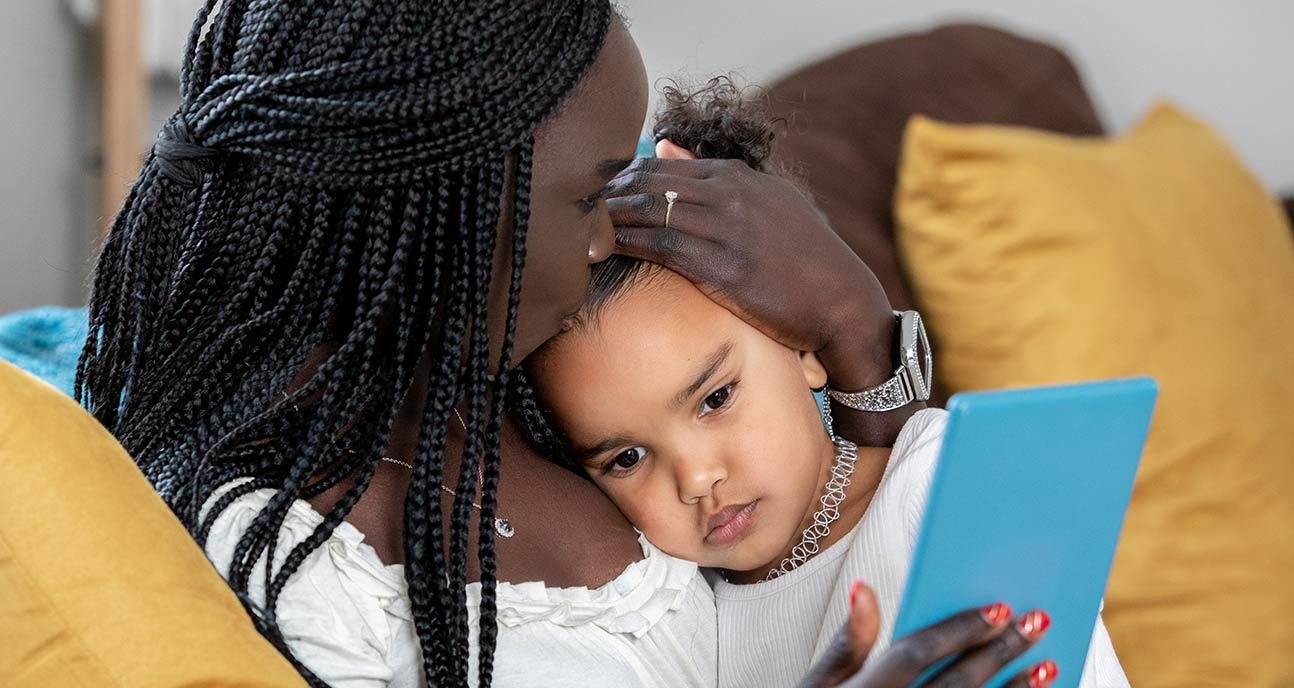NIH-funded study finds Long COVID affects adolescents differently than younger children

Adolescents were most likely to experience low energy/tiredness while children were most likely to report headache.
Scientists investigating Long COVID in youth found similar but distinguishable patterns between school-age children (ages 6-11 years) and adolescents (ages 12-17 years) and identified their most common symptoms. The study, supported by the National Institutes of Health (NIH) and published in the Journal of the American Medical Association (JAMA), comes from research conducted through the NIH’s Researching COVID to Enhance Recovery (RECOVER) Initiative, a wide-reaching effort to understand, diagnose, treat, and prevent Long COVID, a condition marked by symptoms and health problems that linger after an infection with SARS-CoV-2, the virus that causes COVID-19.

Children and adolescents were found to experience prolonged symptoms after SARS-CoV-2 infection in almost every organ system with most having symptoms affecting more than one system.
“Most research characterizing Long COVID symptoms is focused on adults, which can lead to the misperception that Long COVID in children is rare or that their symptoms are like those of adults,” said David Goff, M.D., Ph.D., division director for the Division of Cardiovascular Sciences at the NIH’s National Heart, Lung, and Blood Institute. “Because the symptoms can vary from child to child or present in different patterns, without a proper characterization of symptoms across the life span, it’s difficult to know how to optimize care for affected children and adolescents.”
The observational study included 3,860 children and adolescents with a SARS-CoV-2 infection history at more than 60 sites across the United States between March 2022 and December 2023. A comparison group of 1,516 children and adolescents with no history of a SARS-CoV-2 infection were also included to disentangle whether prolonged symptoms of those who had experienced COVID-19 were related to SARS-CoV-2 itself or more broadly related to the effects of the pandemic.
Caregivers completed a comprehensive symptom survey that asked about 75 prolonged symptoms in all major body systems that occurred at least 90 days after an initial SARS-CoV-2 infection and lasted for at least a month. They also completed a survey asking for their perception of the child’s overall health, physical health, and quality of life. The researchers then employed a commonly used statistical technique to identify which symptoms were best at differentiating participants who did and did not have history of SARS-CoV-2 infection. They identified combinations of symptoms distinct for each age group that together generated a Long COVID research index, which indicates the likely condition of Long COVID.
Researchers identified 18 prolonged symptoms that were more common in school-age children, including headache (57%), followed by trouble with memory or focusing (44%), trouble sleeping (44%), and stomach pain (43%). Other common symptoms in school-age children not included in the research index included body, muscle, and joint pain; daytime tiredness/sleepiness or low energy; and feeling anxious.
In adolescents, 17 symptoms were more common, including daytime tiredness/sleepiness or low energy (80%); body, muscle, or joint pain (60%); headaches (55%); and trouble with memory or focusing (47%). Feeling anxious and trouble sleeping were other commonly reported symptoms that were not included in the research index.
“The symptoms that make up the research index are not the only symptoms a child may have and they’re not the most severe, but they are most predictive in determining who may have Long COVID,” said Rachel Gross, M.D., associate professor in the departments of pediatrics and population health at New York University Grossman School of Medicine and lead author on the study.
Fourteen symptoms overlapped between the age groups. Comparing previous research on Long COVID in adults, the new study found that adults and adolescents had a greater overlap in symptoms, such as loss of or change in smell or taste. Researchers found less overlap between adults and school-age children, underscoring the importance of age-based Long COVID research.
The study identified separate research indexes for school-age children and adolescents along with overlapping, but distinguishable symptom patterns in each group. Of the 751 school-age children that had COVID-19, 20% met the Long COVID research index threshold. Of the 3,109 adolescent children with a history of SARS-CoV-2 infection, 14% met the research index threshold, though researchers noted that these numbers should not be used as measures of incidence in the general population, since their study may have included more children with Long COVID than the overall population.
Scientists note that the research index provides a framework for looking at common symptoms for research purposes—not necessarily as a guide for clinical care—and will likely be refined as researchers study more children with and without Long COVID.
“Our next step is to study children ages 5 years and younger so we can better understand Long COVID in the very young,” said Gross.
In compliance with NIH’s Data Sharing and Management Policy, a dataset containing RECOVER Pediatric Observational Cohort Study data collected through June 15, 2024—which includes data used for this publication—will be released on NHLBI BioData Catalyst® (BDC) this fall.
Research reported in this press release was supported by NIH under award numbers OT2HL161841, OT2HL161847, and OT2HL156812. Additional support came from grant R01 HL162373. The content is solely the responsibility of the authors and does not necessarily represent the official views of the NIH. For more information on RECOVER, visit https://recoverCOVID.org.
Study: Gross RS, Thaweethai T, Kleinman LC, et al. Characterizing Long COVID in Children and Adolescents: RECOVER Pediatric Study. Journal of the American Medical Association. 2024. doi: 10.1001/jama.2024.12747

